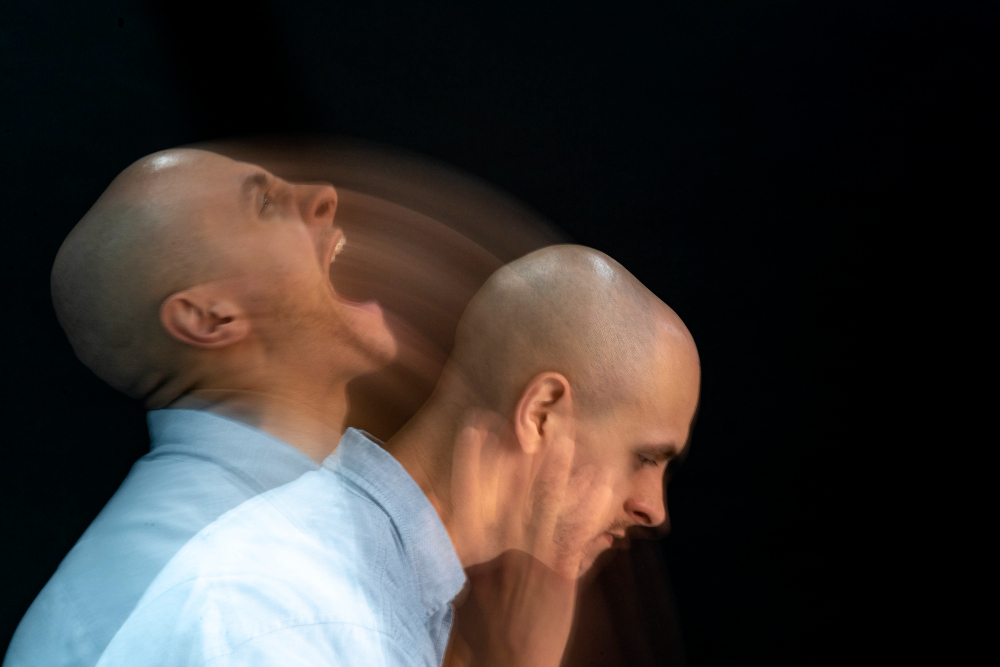Psychosomatic Disorders – A Mind – Body Disconnect
There’s a misconception that physical illnesses are at odds with mental health. Yet, as more medical literature is published, it’s clear this isn’t the case. This section explains what psychosomatic disorders are and why understanding these conditions is so vital.
In simple terms, psychosomatic disorders are physical diseases that we believe to be caused or made worse by mental factors. The name comes from ‘psyche’, meaning mind, and ‘soma’, meaning body, highlighting the integral link between the two.
It is fascinating how these conditions underscore the power of the mind-body connection. For instance, persistent stress can lead to high blood pressure or ulcers. So, it’s not just about feeling stressed; it’s how that stress can wear down your body over time.
Debunking myths is also essential. Some might believe that psychosomatic means ‘imaginary’ or ‘all in the head’, which isn’t accurate or fair to those suffering. Actual psychosomatic disorders have genuine physical symptoms that require professional treatment.
Contents
Identifying Psychosomatic Symptoms: The Body-Mind Link
While you might not immediately connect persistent stomach aches or headaches with stress or your emotional well-being, the body and mind share a formidable bond. Psychosomatic symptoms are physical symptoms that you can’t trace back to any specific physical cause and that you believe to be a manifestation of psychological stresses.

Some commonly seen symptoms include generalized body aches, chronic pain, and issues like irritable bowel syndrome or tension headaches. These can significantly impact an individual’s quality of life. It’s essential to understand that these symptoms are real, not simulated or imagined, and merit attention like any other physical ailment.
Chronic stress, anxiety, depression, and traumatic events have profound effects on the body. They can disturb your body’s balance and create physical expressions of distress. Professionals look for patterns and triggers in a patient’s life that could be causing these symptoms.
This understanding paves the way smoothly into the following challenge: correctly diagnosing these disorders. Sufferers may endure a perplexing and frustrating journey through extensive physical examinations and tests only to find no specific medical explanation for their pain. Diagnosing psychosomatic disorders, by necessity, involves a team approach — one that brings physicians, psychologists, and other healthcare providers together to look beyond the symptoms and understand the person as a whole.
The Journey of Diagnosing Psychosomatic Disorders
Diagnosing psychosomatic disorders can be as complex as the conditions themselves. With symptoms that mimic physical illnesses, you may easily overlook the true psychological roots. I’ll share insights into why these disorders present a diagnostic challenge and how health professionals identify them.
Unlike conditions with clear lab tests or imaging, psychosomatic disorders require a detective-like approach. A comprehensive evaluation that examines the individual’s medical history, current stress levels, and emotional well-being is often involved. Recognition of patterns that link psychological distress to physical symptoms is vital. It’s crucial to rule out other medical conditions, which may require several tests.
Interdisciplinary teams are often the gold standard for diagnosing these elusive disorders. These teams typically include medical practitioners, psychologists, and sometimes alternative therapy providers. They collaborate to create a complete picture of a person’s health, which can lead to more accurate diagnoses. There’s an emphasis on empathic listening, as the individual’s narrative often holds valuable clues.

Holistic care doesn’t stop at diagnosis. It opens the door to various treatment options tailored to the mind and body. Cognitive-behavioural therapy might help a patient address underlying stressors, while physical treatment could address the resulting chronic pain.
Keep reading to explore the various treatment possibilities for psychosomatic disorders. From the more traditional psychotherapy and medication to the supportive role of lifestyle changes and alternative therapies, we’ll examine how each approach aims to restore balance to both the mind and the body.
Treatment Options for Psychosomatic Conditions
When faced with a psychosomatic disorder, the treatment path can seem daunting. Yet, a range of approaches may lead to relief and recovery. The mainstay of treating these conditions is a multi-layered approach that may involve psychotherapy, medication, lifestyle adjustments, and alternative therapies.
Psychotherapy is the leading treatment for psychosomatic disorders. Cognitive-behavioural therapy (CBT) has helped patients understand the relationship between their thoughts, emotions, and physical symptoms. Techniques such as mindfulness and stress-reduction exercises enable individuals to manage their symptoms and address the underlying psychological distress that may be contributing to their physical ailments.
In some cases, medication becomes a necessary component of treatment. While not a cure-all, certain drugs can alleviate symptoms, making it possible for patients to engage more fully in psychotherapy and other treatments. Understanding that medication can come with side effects is crucial, and a healthcare professional should closely monitor its usage.
Adopting healthier lifestyles can also play a pivotal role in treatment. Modifications such as incorporating regular physical activity, improving sleep habits, and ensuring proper nutrition contribute to overall well-being and can reduce symptoms. Techniques like yoga, meditation, and acupuncture have also gained recognition for their benefit in psychosomatic care.

It’s clear that a multifaceted approach is necessary—one that treats the whole person, not just the symptoms. As individuals move toward managing their psychosomatic disorders, the next stage is learning how to cope with the condition daily, which is the focus of the upcoming discussion. Tools and support systems are vital for anyone with these complex conditions.
Living with a Psychosomatic Disorder: Personal Stories
It’s incredibly empowering to hear how people navigate life with psychosomatic disorders. For many, it’s an ongoing process of self-discovery and management. There’s no one-size-fits-all approach, but sharing personal stories can provide comfort and a sense of community.
One element that frequently emerges in these narratives is the vital role of support systems. Friends, family, and mental health professionals often become pillars of strength, offering the encouragement needed to face the challenges of daily living.
However, what works for one person may not work for another. That’s why exploring and developing individual strategies for managing symptoms is crucial. Exercise, for instance, offers relief to some, while others find solace in creative outlets like writing or painting.
Creating resilience isn’t about ignoring symptoms or pushing through pain; it’s about fostering a mindset that helps navigate the complexities of a psychosomatic condition. Practising mindfulness, therapy, and lifestyle adjustments can fortify one’s resilience.
How you frame your experience with a psychosomatic disorder can also reshape your journey. Embracing your condition as a part of yourself rather than a defining feature can propel you toward unprecedented personal growth and learning.
Advancing Understanding: Future Directions in Psychosomatic Research
While understanding psychosomatic disorders has come a long way, we’ve still got much to discover. Research continues to delve into the complex mental and body relationship, seeking more effective treatments and interventions.
Progress in psychosomatic medicine research is promising. Studies are exploring genetic factors, neurobiological processes, and the impact of early life experiences on the later development of psychosomatic symptoms. These investigations can potentially unveil targeted approaches, improving the precision and effectiveness of treatments.
Emerging treatments, such as biofeedback, mindfulness practices, and integrative therapy, are being evaluated for their efficacy in managing psychosomatic disorders. As evidence mounts, these practices may offer additional options for those seeking to relieve their symptoms.

Public awareness and destigmatization play a crucial role in how we approach psychosomatic disorders. By fostering a greater understanding, we encourage early intervention and support, leading to better individual outcomes.
Future advancements in this field depend on continuous scientific inquiry and societal acceptance. I encourage readers to stay informed and engage in conversations about psychosomatic health, as it impacts so many lives, often silently. Awareness is the first step towards change, and we can look forward to a time when we address psychosomatic disorders with the empathy they warrant.
Resources:
Cleveland Clinic
clevelandclinic.org/health/diseases/21521-psychosomatic-disorder
Very Well Mind
https://www.verywellmind.com/depression-can-be-a-real-pain-1065455





July 24, 2024 @ 12:16 pm
Hi there
I like how your article offers a comprehensive and insightful look into the mind-body disconnect, emphasizing the importance of understanding the psychological roots of physical ailments. The clear explanations and real-life examples make the complex topic accessible and relatable. This piece does an excellent job of highlighting the significance of addressing both mental and physical health for overall well-being.
Have you noticed any specific strategies that are particularly effective in bridging the mind-body gap for those suffering from psychosomatic disorders?
August 21, 2024 @ 12:31 am
Thanks Troy,
A couple of the interventions/strategies I’ve found personally helpful are:
1. Holosync Meditations – you can experience it with their 5 day Challenge – https://www.centerpointe.com/5…
2. Maintaining a coherent Heart Rate Variability through using Inner Balance from HeartMath – https://www.heartmath.com/